28JULY07 – Nothing prepares you for a “Day at the Pagoda!” Getting there is an extraordinary adventure in itself. The only way to describe the traffic pattern of motorbikes (mixed with bicycles, cars and buses in a ratio of about 50:1, 500:1, and 5000:1 respectively) is to imagine a swarm of bees on a hive, each knowing its objective and working very hard to achieve it, but to the outside observer all appears to be chaos. Traveling at varying speeds from 15 to 40mph (while dodging the bikes traveling at 5 to 15mph), the motor bikes weave in and out generally 3 to 5 abreast on two-way streets barely wide enough for 2 cars to meet, with no traffic lights or breaks in the flow. Thus, with 6 to 10 motorbikes weaving in opposite directions at any instant, a left turn across the oncoming traffic generally is negotiated by moving onto the wrong side of the road to establish one’s intention and then gradually moving left while the oncoming motor bikes swerve to their left to avoid the head-on collision. And pedestrians? Forget it, burn some incense in the temple and just step right out since there will never be a break in the traffic, just take on faith that everyone will swerve around you!
In this teeming city of 8 million (1/3 of which are here “illegally” having been removed to the countryside by the Communist regime as supporters of the South in the “American War” or relegated to the rural area), we whiz past literally thousands of retail outlets – every street between our residence and the Pagoda (probably 10 miles or so) has wall to wall buildings, typically about 15 ft wide, with the ground floor selling something highly specialized (don’t ask me what in most cases!) These are hard-working folks – very few appear to have any customers but the shops are open from 5AM to 9PM 7 days a week just in case. We recognize three or four English names near a few of the bigger “upscale” intersections: Internet, Karaoke, KFC and Beer Pub. Finally we branch off into an even smaller street – should be a one-way but of course it’s not – we come upon a surreal sight: the Ky Quang II Pagoda (“KQII”) and Handicapped Children Center.
KQII rises like a Disney attraction out of nowhere – built to look like a volcanic mountain maybe 50 feet high – where the roller coaster should be emerging is the smiling 20 foot Buddha face “carved” into the mountain and painted reddish-pink. A 20 foot high gold arched entrance is surrounded by gold carvings of dragons and other mythological creatures. As we drive past the incense vendors into the courtyard, full of at least 100 parked motorbikes, the sights and smells are overwhelming. KQII fills about half of a US city block – and is home to 216 mostly handicapped children (about 20 or so of the infants and toddlers are normal and in addition to going to school become employed as caretakers of the handicapped children) and about 90 monks, mostly slight unisex women with shaved heads and dull gray robes. Before we can fully acclimate to the fountains, carvings, and small prayer enclaves with intricate gold figures, Ven. Thich Thien Chieu (“Mr. Chau” for westerners) comes up to greet us dressed in the traditional saffron robes. Barely 5 feet tall with a beatific smile, he presents Aly with a basket of red roses and pink orchids and welcomes us profusely.
On the way to visit the children, housed in two stories of rooms loosely connected to the back of the Pagoda, we first come to the medical clinic. Mr. Chau shows us the register book, which records the name, diagnosis, and “prescription” given to each of the 300 to 400 people seen each day. There are two herbal doctors who make the diagnoses – all of the prescriptive remedies come from 20 to 30 different kinds of herbs found in 18 in. by 3 ft. white plastic rice sacks (that hold 100 lbs of rice or so). The “pharmacists” lay out 5 or 6 sheets of tabloid shaped newspaper, and reading the prescription list of herbs to be mixed, sprinkle an imprecise handful of each ingredient into the middle of each sheet. The prescriptions typically have 8 to 12 different herbs – all very dry – the obvious ones being different tree barks but most are dried to a greenish brown and emit little smell. Once the prescription is filled, the sheets are folded up, “tied” with a rubber band, and the 5 or so little identical packages are put in a plastic bag for the patient. Each daily prescription parcel is designed to be boiled down over a period of many hours into a single cup of “tea,” the flavor of which I cannot imagine. Approximately 5% of the diagnosed entries say “HIV” – the remainder are unintelligible to us but include diabetes and other serious ailments.
I've run out of time - we are off to see the Cu Chi Tunnels so the experience with the children, monks and other caregivers will have to wait until we return!
The Cu Chi Tunnels were great, but back to yesterday's visit to the Pagoda (which I have learned is a place of worship rather than a shrine in Vietnam, but is just the opposite in China where a "temple" is a place of worship and a "pagoda" is a shrine).
After the clinic tour, we reach the rooms for the children. The first room we enter houses 10 or 12 children ages 6 mos. to about 3 ½. The children are in cotton blue shorts and t-shirt “uniforms.” Knowing that some children are HIV positive or have AIDS and all are a little shy when we first come in, we first awkwardly the observers. However, Mr. Chau is immediately on the floor hugging and laughing with the children. Thus, within a few minutes the active ones are in our arms and laughing at the camera images when we show them their own photos and those of the other children. There are several in cribs with severe disabilities who we don’t quite know how to approach – immediately to our left is a hydrocephalic girl who is crying and whose face appears to be in a permanent “scream.” I’m not sure what is the culturally appropriate reaction – but Aly jumps in to comfort the child and stroke her hair, so I take the arm of another similarly deformed child in another crib. It’s hard to know whether the 5 or 6 caregivers, all women but only half dressed as monks, consider us intruders or welcome partners. My conclusion is that the shyness and language barrier is the reason they hold back – since Mr. Chau is so effusive about us being there (as captured by his omnipresent camera-wielding assistant!)
The first room is the largest one we see – perhaps 15 x 20 and “self-sufficient” with a cooking stove, small washer and dryer, cribs for each child, and shelves with clothes and toys. Each room we visited thereafter had progressively older children. The children under 6 or 7 seemed to have a sufficient number of caregivers, but I’m not sure that was true for the older children. Every room had its own kitchen and cooked similar meals of rice, steamed vegetables and small amounts of meat – despite the fact that the monks are vegans. After the first room, we felt more and more comfortable with the children even though they were more severely handicapped – to the point that only the blind children could feed themselves. At the end of the afternoon, we had a long talk with Mr. Chau – he was so friendly and appreciative in inviting us to come back and spend the full day on Monday to: have a ceremony to accept our gift; give presents that he would prepare for all of the children; take us to another of his pagodas; visit the Pagoda’s farm where they raise vegetables and are interested in raising their own medicinal herbs, have lunch and dinner and stay for after dinner meditation with the monks. All in all, Mr. Chau was delightful and made us feel like honored guests – exuding the kind of delightful grace and energy that makes one feel content in his presence, even in the most foreign of surroundings.
It has been marvelous to have Philippe and his wife Xuan as our hosts - incredibly gracious -they have made us feel completely at home in their beautiful French-style "mansion" - 3 floors, 6 guest rooms on the 3rd floor with Phillipe's business office and their personal quarters on the second floor and the ground floor being the kitchen, open air (but covered dining room and 50 foot swimming pool that extends beyond the reach of the house). We have a "North American" Internet phone to call home and broadband Internet access plus a "family" to eat with an educate us about Vietnam and a wonderful Vietnamese cook who prepares amazing traditional Vietnamese rice, vegetable and chicken or fish (Talipia last night) dishes. Philippe and Xuan (and their 17-year old son Patrick) speak French as their first language, English as their second, and Xuan is fluent in Vietnamese so she acts as translator at the Orphanage. It's a beautiful and relaxing place to stay, surrounded by the teeming chaos of HCMC urban life.
Subscribe to:
Post Comments (Atom)
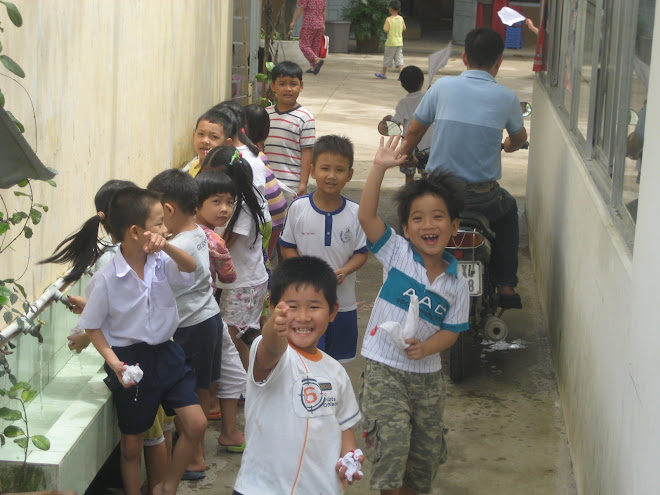
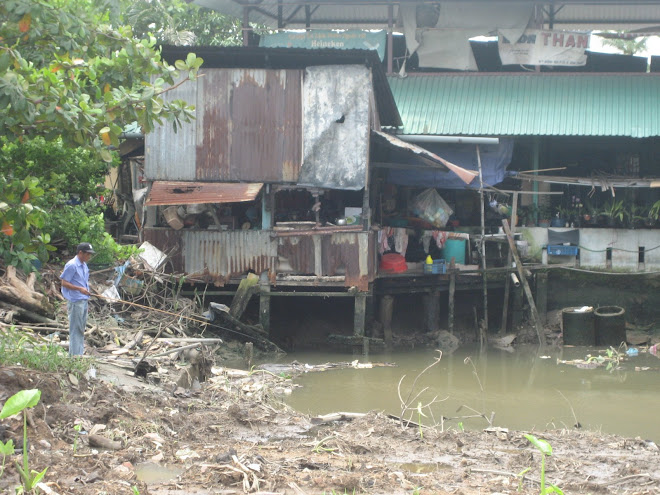
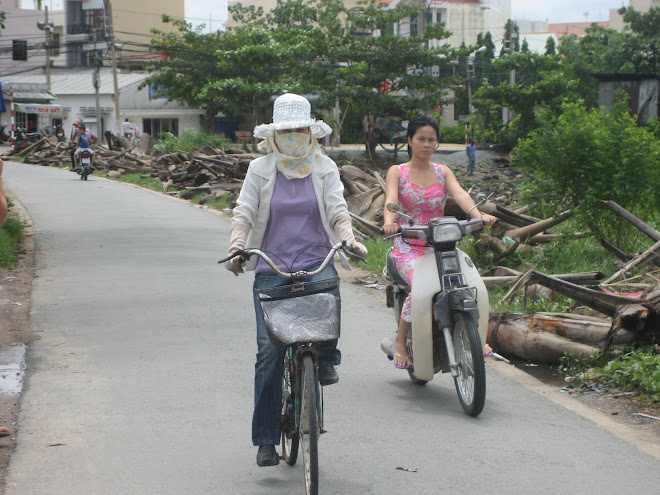
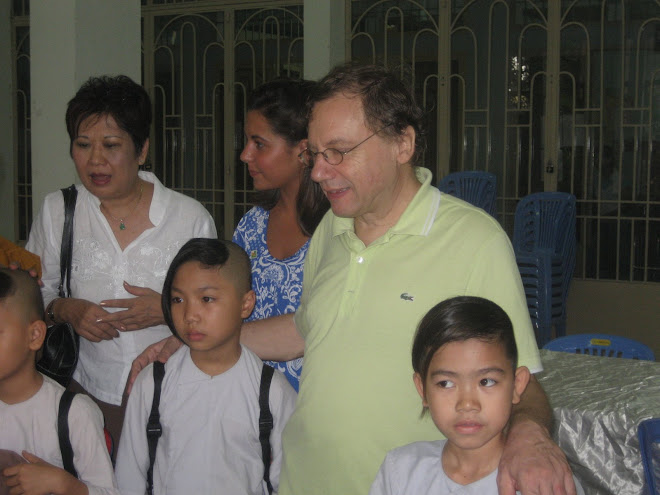
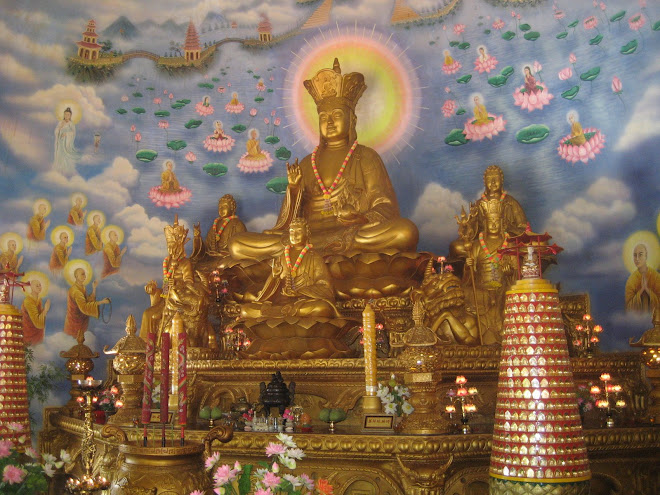
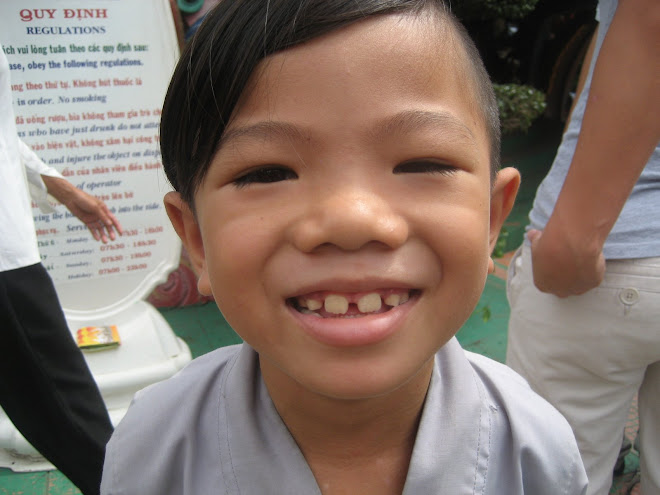
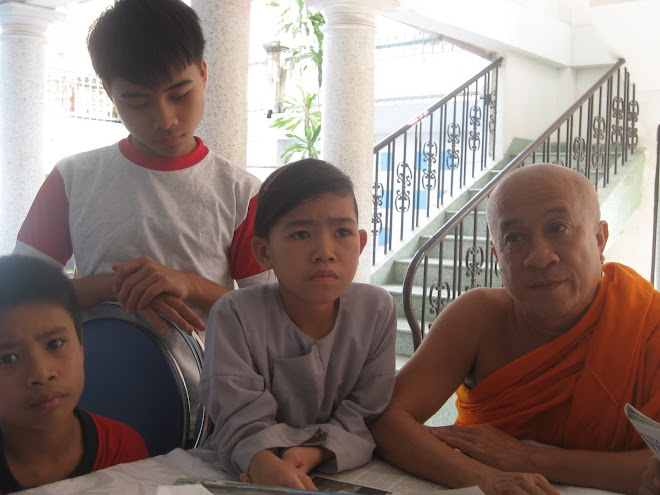
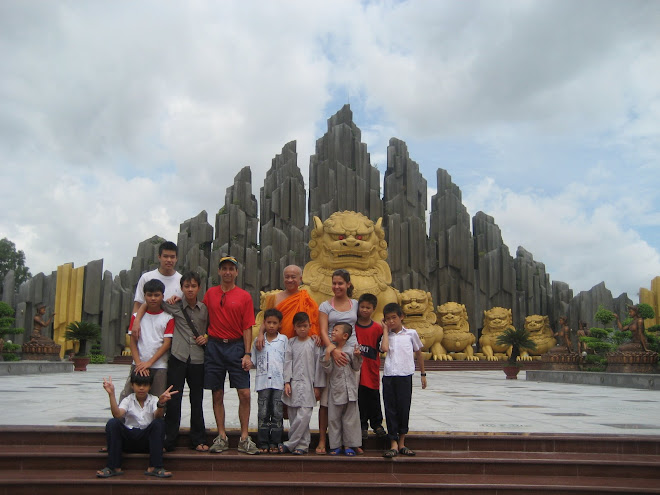
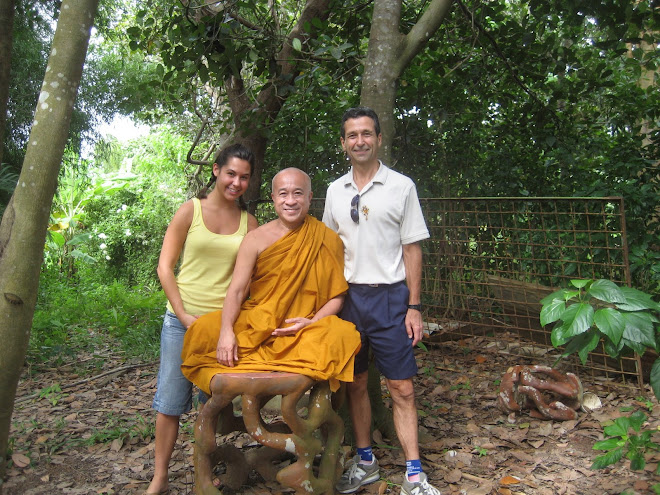

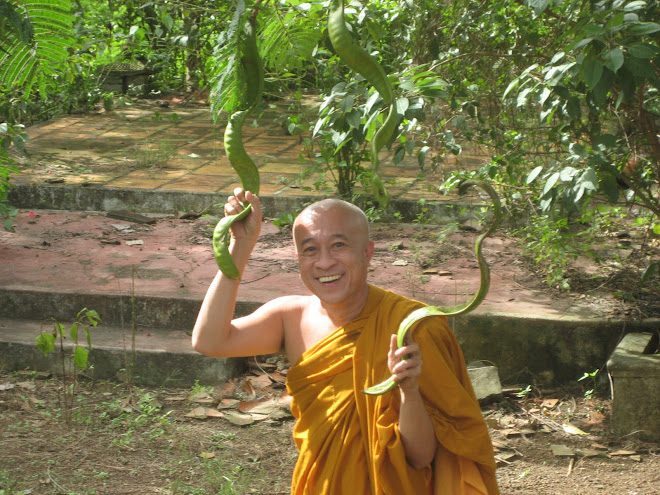
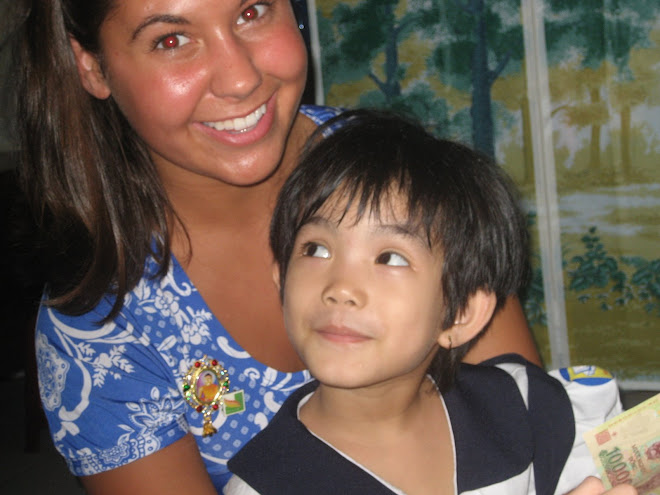

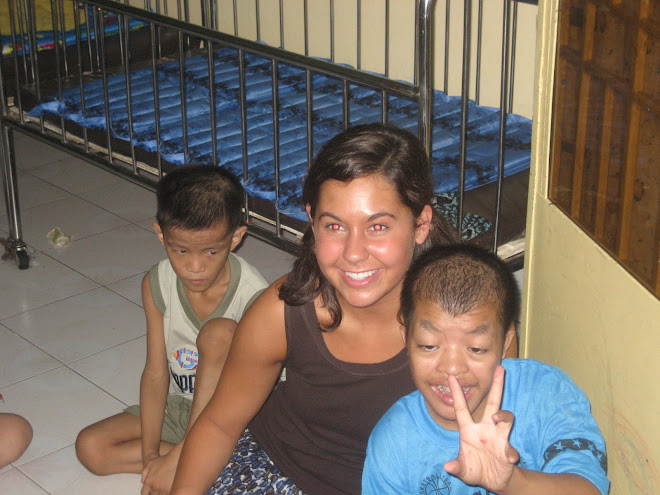
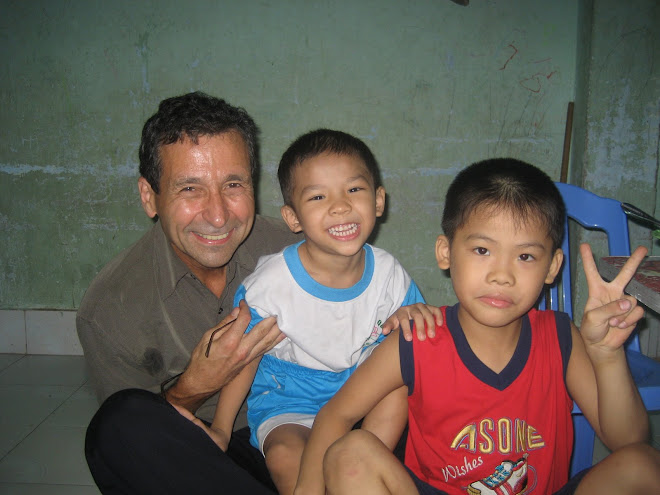
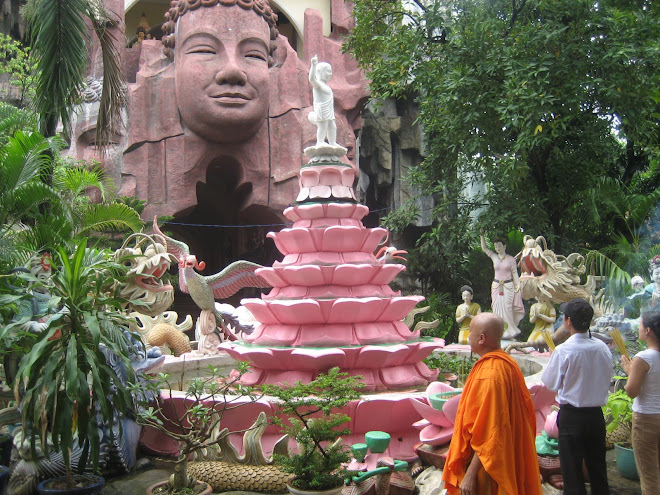
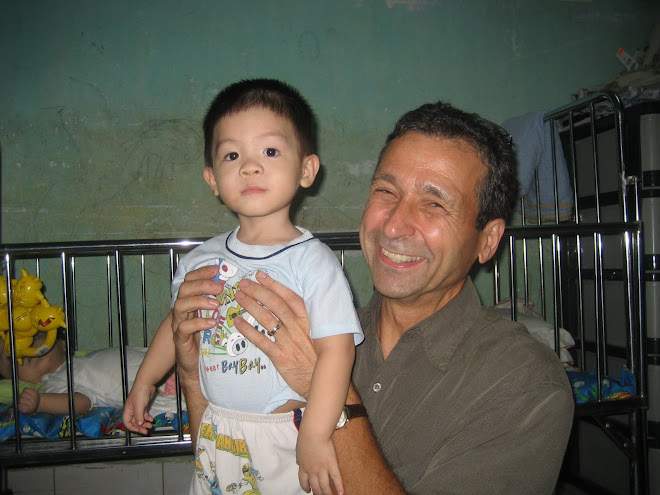
No comments:
Post a Comment